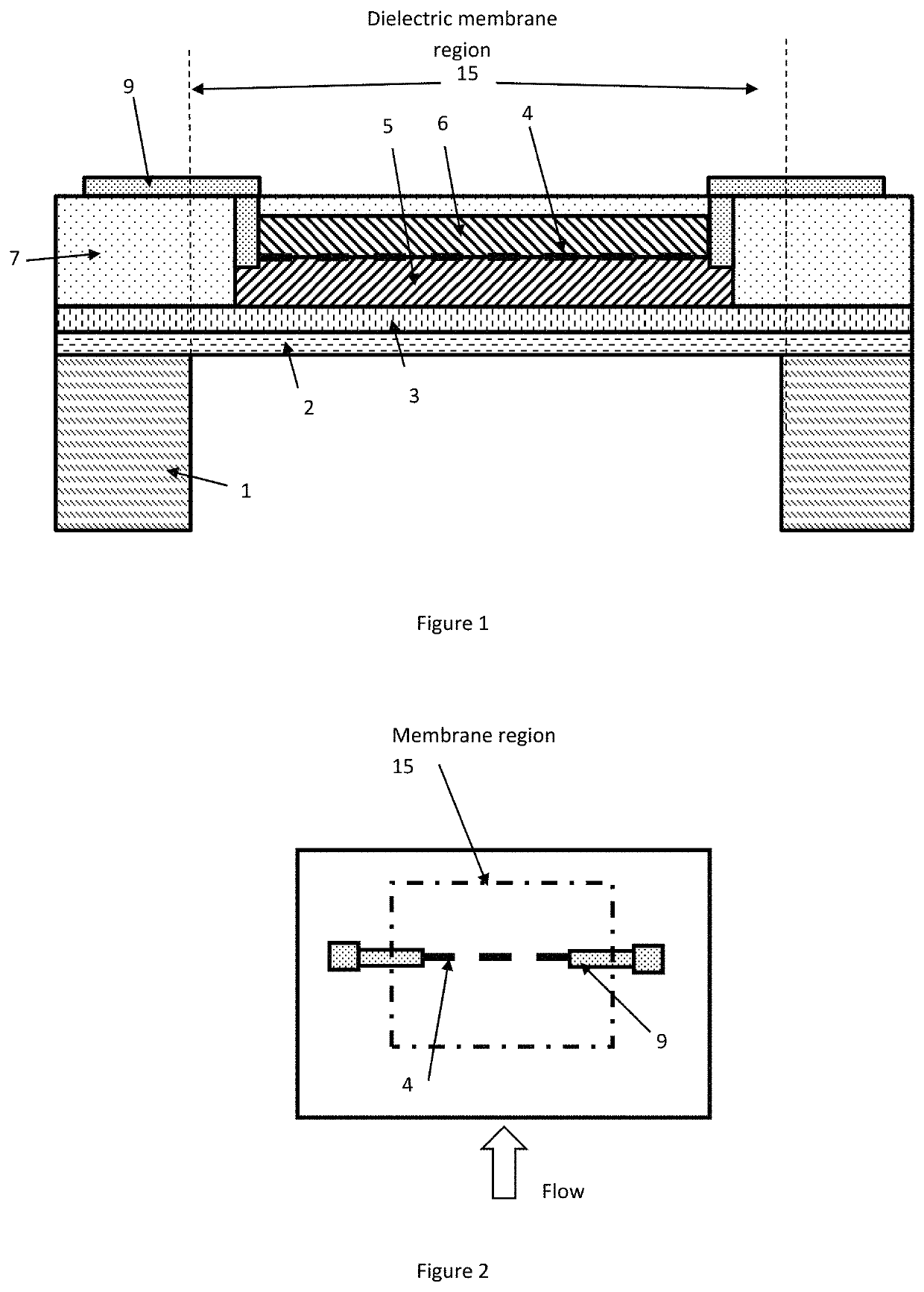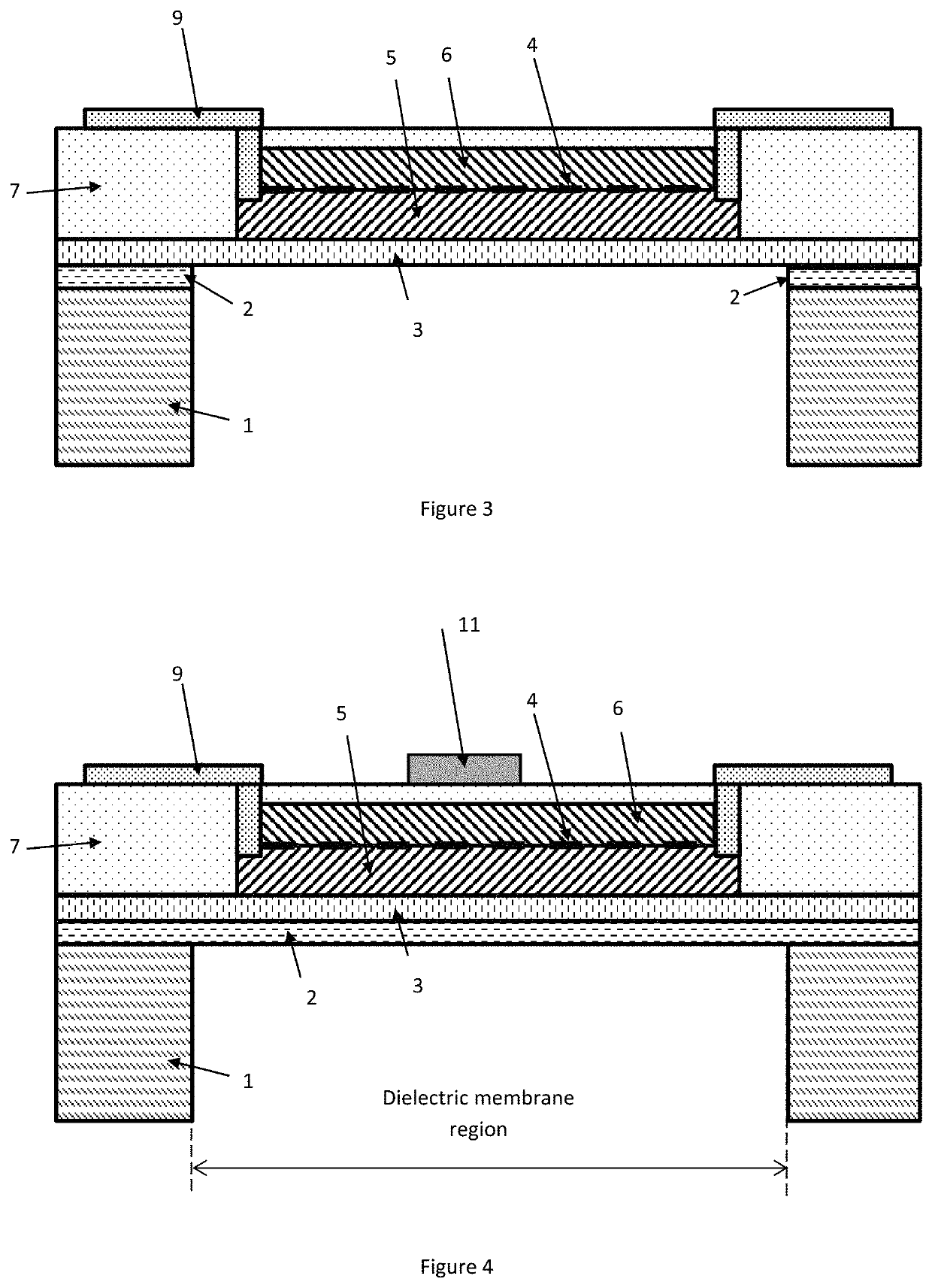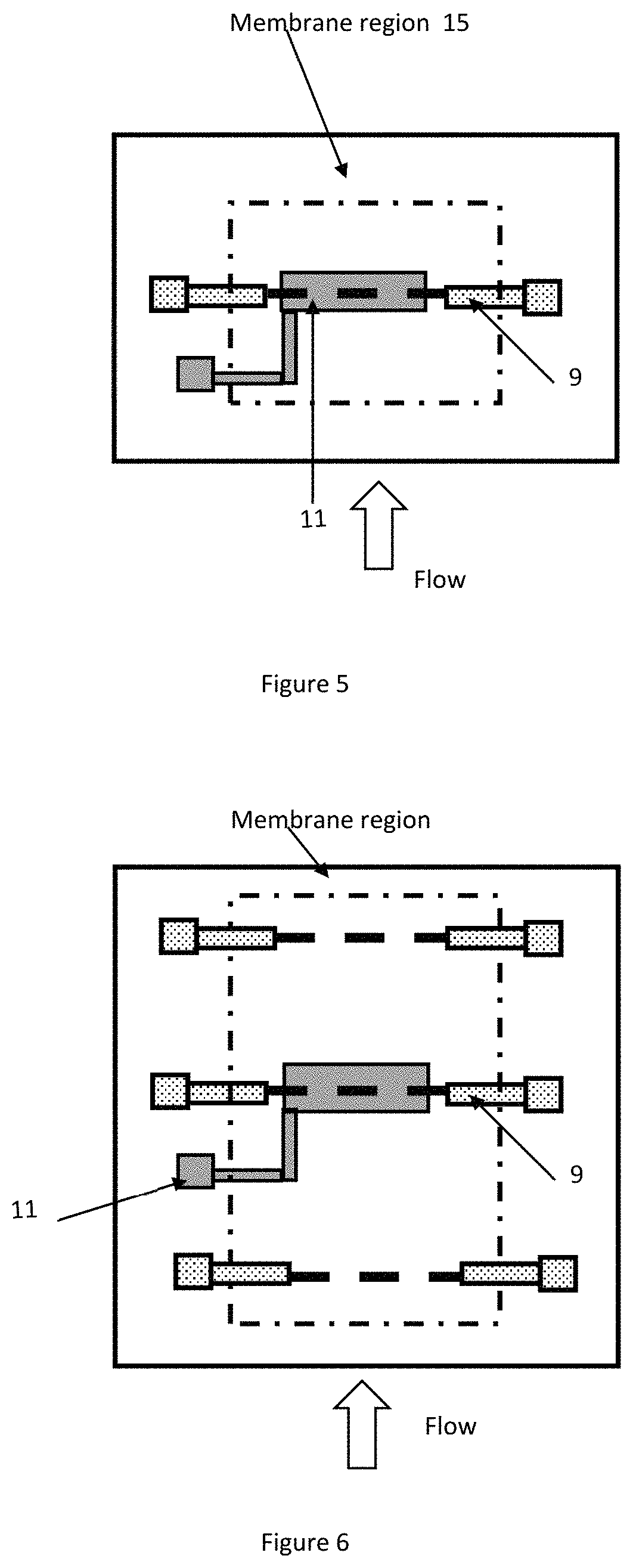Thermal fluid flow sensor
a technology of thermal fluid flow and sensor, which is applied in the manufacture/treatment of thermoelectric devices, instruments, liquid/fluent solid measurements, etc., can solve the problems of low sensitivity, slow dynamic response of the sensor, and high power dissipation, so as to reduce the size and cost of the sensor, increase the sensitivity of the sensor, and reduce the thermal conductivity of the membrane stack
- Summary
- Abstract
- Description
- Claims
- Application Information
AI Technical Summary
Benefits of technology
Problems solved by technology
Method used
Image
Examples
Embodiment Construction
[0118]Some preferred embodiments of the disclosure will now be described by way of example only and with reference to the accompanying drawings, in which:
[0119]FIG. 1 shows a cross section of a heterostructure based sensor;
[0120]FIG. 2 shows a top view of a heterostructure based sensor;
[0121]FIG. 3 shows a cross section of a heterostructure based sensor. The nucleation layer has been etched;
[0122]FIG. 4 shows a cross section of a heterostructure based sensor. An additional gate is formed on the sensor;
[0123]FIG. 5 shows a top view of a heterostructure based sensor. An additional gate is formed on the sensor;
[0124]FIG. 6 shows a top view of a heterostructure based sensor. Three elements are formed on the membrane region;
[0125]FIG. 7 shows a cross section of a heterostructure based sensor. An ASIC is assembled at the bottom of the sensor for stack-assembly in the same package;
[0126]FIG. 8 shows a cross section of a heterostructure-based infra-red device that can be operated as IR emit...
PUM
| Property | Measurement | Unit |
|---|---|---|
| temperature | aaaaa | aaaaa |
| area | aaaaa | aaaaa |
| band gap | aaaaa | aaaaa |
Abstract
Description
Claims
Application Information
 Login to View More
Login to View More - R&D
- Intellectual Property
- Life Sciences
- Materials
- Tech Scout
- Unparalleled Data Quality
- Higher Quality Content
- 60% Fewer Hallucinations
Browse by: Latest US Patents, China's latest patents, Technical Efficacy Thesaurus, Application Domain, Technology Topic, Popular Technical Reports.
© 2025 PatSnap. All rights reserved.Legal|Privacy policy|Modern Slavery Act Transparency Statement|Sitemap|About US| Contact US: help@patsnap.com



